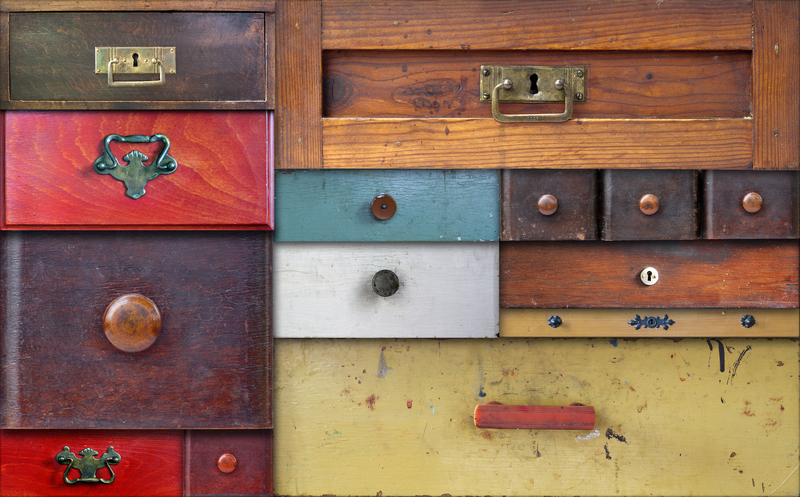Safe and Compassionate Clutter Removal for Hoarder Clean Up Scenarios
Hoarder clean up scenarios are uniquely sensitive, often involving both emotional challenges and physical risks. Effective and sustainable clutter removal in these environments requires more than just organizational skills and hard work; it calls for empathy, understanding, and a methodical approach to ensure the process is safe, respectful, and successful. In this in-depth guide, we will explore the best practices for safe and compassionate clutter removal tailored to hoarder clean up settings. Whether you are a family member, professional organizer, or support worker, this comprehensive article will equip you with knowledge, tips, and resources for handling these delicate situations.
Understanding Hoarding Disorder and Its Impact
Hoarding disorder is recognized as a mental health condition marked by persistent difficulty in discarding or parting with possessions due to a perceived need to save them. The value of these items is often unrelated to their actual utility or worth. This leads to the accumulation of clutter, severely disrupting the functionality of living spaces and, in extreme cases, posing health and safety hazards.
- Emotional attachment: Many affected individuals feel intense emotional or sentimental value toward objects, making it painful to let go.
- Health risks: Clutter can harbor mold, pests, dust, and other allergens, increasing the risk of respiratory illnesses and accidents.
- Social isolation: Shame and embarrassment may keep individuals from inviting others into their homes, leading to loneliness and isolation.
- Structural damage: The weight and spread of clutter may damage floors, walls, and even lead to property code violations.
Before embarking on clutter removal for hoarder scenarios, it's important to approach the situation with compassion, patience, and a solid plan to safeguard the well-being of everyone involved.

Why Compassion Matters in Hoarder Clean Up
Compassionate clutter removal is not just about clearing out physical items but also about supporting the individual emotionally. Judgement, impatience, or forcing the process can cause distress, resistance, or even trauma.
- Building trust: A gentle and empathetic approach helps the person feel respected and understood, which is critical for cooperation.
- Long-term success: People are more likely to maintain progress if they are involved in decision-making and don't feel forced.
- Relapse prevention: Compassion helps the person face underlying causes of hoarding, decreasing the risk of future accumulation.
For safe and effective outcomes, clutter removal for hoarders should always be done in a non-judgmental, supportive manner.
Preparing for a Safe Hoarder Clean Up
Hoarded environments may present several safety hazards, including fire risks, structural instability, biohazards, pests, and sharp objects. Proper preparation is crucial for safe clutter removal.
- Assessment: Walk through the property (if safe) to identify hazards. Take note of blocked exits, trip hazards, exposed wiring, sharp objects, or signs of mold or pests.
- Protective gear: Equip yourself with gloves, masks, closed-toe shoes (preferably steel-toed), and sometimes Tyvek suits, especially if there are biohazards present.
- First aid kit: Ensure you have basic medical supplies readily accessible in case of minor injuries.
- Plan for waste disposal: Contact local waste management or hazardous material disposal services ahead of time if necessary.
- Emergency contacts: Know how to reach local emergency services and inform someone of your location and schedule for safety purposes.
Step-by-Step Compassionate Clutter Removal Process
1. Engage with Empathy
Start clutter removal for hoarder clean up with a conversation. Respect the individual's attachment to their possessions. Ask open-ended questions and listen without judgement. Explain your role as a helper and re-assure them that the goal is their safety and comfort.
- Consent is key. Nothing should be removed without explicit permission.
- Use supportive language such as "Let's work together" or "What would you like to do with this?"
2. Develop a Personalized Clean-Up Plan
Every hoarding situation is unique. Tailor your clutter removal strategy to the individual's needs and preferences.
- Set priorities: Focus on high-risk areas first (e.g., kitchens, bathrooms, blocked exits).
- Break it into steps: Don't attempt to do everything in one session. Plan for manageable chunks of work (such as one room or one category of items at a time).
- Schedule breaks: Clutter removal is physically and emotionally taxing. Allow for plenty of rest and hydration.
3. Sort Items Thoughtfully
Compassionate removal means respecting the person's belongings--and their emotions. Use this sorting framework:
- Keep: Essential and meaningful items (with reasonable quantity limits).
- Donate: Usable items the person is willing to part with.
- Discard: Broken, expired, or hazardous items.
- Undecided: A box for items that the person isn't ready to make a decision on--revisit these later.
Always ask permission before moving or discarding anything. Sometimes a mental health professional may recommend the person practice making "small decisions" by starting with low-sentiment items like old newspapers or food wrappers.
4. Handle Hazardous Materials with Special Care
In many hoarder clean ups, you'll encounter:
- Moldy or spoiled food
- Sharps or broken glass
- Animal droppings or remains
- Medications, chemicals, or unknown substances
Do not attempt to remove hazardous materials unless you have proper equipment and training. Contact local hazardous waste professionals for safe disposal.
5. Clean and Disinfect Safely
- After clutter removal, use EPA-approved cleaning agents to disinfect surfaces and eliminate lingering odors or bacteria.
- Ventilate the area by opening windows and using fans if possible.
- Check for pest infestations and consult pest control if necessary.
6. Celebrate Progress and Maintain Momentum
Hoarder clean up is a long journey. Celebrate small wins and validate the person's feelings. Take "after" photos and review progress together. This reinforces positive change and motivates further improvement. If possible, connect the individual with ongoing support--professional organizers, therapists, or local support groups.
Top Safety Tips for Hoarder Clutter Removal
- Never work alone if possible.
- Avoid moving heavy items single-handedly--ask for help or use proper moving tools.
- Use sturdy boxes or bags for debris--avoid overfilling.
- Watch for insects, rodents, or other pests hiding within clutter.
- Be aware of potential fire hazards and blocked exits--clear these areas first.
- Keep pathways clear throughout the process for safe movement.
- Have a plan for sharp objects or anything that could cause injury.
The Importance of Aftercare in Hoarder Clean Up
Compassionate clutter removal doesn't end when the space is tidied up. Ongoing support is critical to help the individual sustain the changes and prevent future hoarding. This may include:
- Follow-up visits: Schedule regular check-ins to monitor progress and offer encouragement.
- Professional help: Encourage therapy, counseling, or participation in hoarding support groups.
- New organizational habits: Help the person create simple routines for maintaining a clutter-free home.
Where possible, connect with local community resources that offer ongoing support and education for individuals affected by hoarding disorder.
Common Questions about Hoarder Clean Up and Clutter Removal
Is hoarder clean up dangerous?
Yes, hoarder clean up can be dangerous due to physical hazards (falling objects, trip hazards, structural issues), biological hazards (mold, pests, bio-waste), and the sheer physical demands of moving heavy clutter. Always assess risks before starting and wear protective equipment.
Can I clean up a hoarder space by myself?
It's not recommended to clean up alone in severe hoarding situations. Enlist professional help, especially if you encounter hazardous materials or need emotional support. Compassionate clutter removal is more effective with a trained team and a support network.
How can I help a loved one who is a hoarder?
Approach them with empathy, patience, and understanding. Avoid judgement or ultimatums. Suggest seeking professional help, and if they agree, assist with finding support services or professional organizers with experience in hoarder clean up scenarios.
Are hoarder clean up services confidential?
Yes, reputable clutter clean up companies and support workers maintain strict confidentiality to respect the individual's privacy and dignity. Always discuss privacy expectations before starting.
Choosing the Right Hoarder Clean Up Professionals
For large-scale or hazardous clutter situations, professional specialists in hoarder clean up offer expertise in both safety and compassionate care. When choosing a service provider:
- Look for certified and insured clean-up teams
- Ensure staff are trained in hoarding disorder sensitivity
- Ask about their disposal practices and ability to handle biohazards
- Read reviews and ask for referrals
- Confirm they offer confidentiality and non-judgmental services

Key Takeaways for Safe and Compassionate Clutter Removal
- Compassion is as important as safety--always approach with empathy and patience
- Assess hazards carefully and never compromise on protective gear
- Enlist help when necessary--both for physical safety and emotional support
- Celebrate progress and reinforce positive change
- Offer or arrange aftercare to help the individual maintain a clutter-free life
Conclusion
Safe and compassionate clutter removal for hoarder clean up scenarios is a delicate yet rewarding process. Success lies in balancing physical safety with emotional sensitivity, respecting the individual's pace and wishes throughout the journey. Whether you are an organizer, loved one, or professional, remember that decluttering a hoard is a marathon, not a sprint. With the right approach and ongoing support, restoring a home to safety and dignity is possible--one step at a time.
